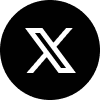Instagram Hashtag Generator: Free AI Tool for Viral Posts
Features of RecurPost’s Instagram Hashtag Tools
Elevate your strategy with hashtag suggestions that work and help you get featured on the Explore page.
Real-Time Trend Detection
The system refreshes trending hashtag data every 4 hours, identifying emerging conversations before they peak.
Multi-tier Tag Strategy
Blends discovery, engagement, and niche tags using insights from 7.2M+ daily interactions to boost reach and relevance.
Performance-Verified Selections
Tags are chosen based on real data from 43K+ accounts, showing 23%+ higher engagement in your content category.
How to Use RecurPost’s Instagram Hashtag Generators

Get Started Easily
RecurPost simplifies Instagram scheduling, saves you time, and boosts your impact. It takes just minutes to begin.
Questions & Answers About Generating
Hashtags for Instagram
What makes RecurPost the best Instagram hashtag generator?
RecurPost is seen as the best hashtag generator for Instagram because it uses an AI-powered hashtag suggestion tool to generate trending and niche hashtags for Instagram reels and posts. This AI-powered Instagram hashtag generator delivers relevant hashtags instantly, making it a free hashtag generator that Instagram users can count on for real-time trend detection and increased engagement. It’s quick and accurate, making it a go-to choice for content creators, brands, and social media marketers.
How does RecurPost’s free AI hashtag generator work?
RecurPost’s AI hashtag generator for Instagram checks your content or keyword input and creates smart hashtag suggestions for Instagram posts, stories, and reels. This Instagram hashtag generator tool uses real-time analytics and a large hashtag database to find trending hashtags, niche hashtags, and performance-verified selections. The AI-powered functionality matches your content with hashtags that have 23%+ higher engagement rates compared to manual selection, making it a top choice for Instagram creators looking to boost reach.
Does RecurPost’s hashtag maker offer niche-specific hashtag ideas?
Yes, this Instagram hashtag generator tool gives you niche-specific hashtags and discovery hashtags based on your content. With RecurPost’s AI-powered hashtag suggestion tool, you get targeted hashtag ideas to reach your audience and boost engagement with the best hashtags for your category.
Is the social media hashtag generator by RecurPost completely free?
Yes, RecurPost offers a free hashtag generator tool for many social media platforms, including a free Instagram hashtag generator that gives you unlimited access to AI-powered hashtag suggestions and trending hashtags. This free hashtag generator for Instagram reels and posts does not need any payment or subscription, making it a top choice for anyone looking for a free Instagram hashtag tool. RecurPost’s hashtag generator tool delivers professional hashtag recommendations and works better than many paid tools, including the Inflact Instagram hashtag generator.
Can I improve hashtags in social media posts using RecurPost?
Yes. RecurPost’s hashtag generator tool suggests engagement hashtags, trending hashtags, and discovery hashtags for Instagram posts, reels, and other social media content. This AI hashtag generator helps you find relevant hashtags to boost your post reach and improve content visibility.
Can I use RecurPost’s hashtag generator for other platforms like Facebook or LinkedIn?
While it’s optimized as an Instagram hashtag generator, it also works well for Facebook and LinkedIn hashtags, giving you a multi-platform hashtag solution in one place.
This free AI hashtag generator for Instagram analyzes your content description and automatically creates relevant hashtags for your posts. It processes your keywords through advanced algorithms, scanning real-time data to identify trending hashtags and niche hashtags.
This helps boost your Instagram reach and engagement effortlessly. Use this tool to find the perfect Instagram hashtags and make your content more discoverable to your target audience.
RecurPost reviews show that customers love us
Capterra
4.8 Star Rating
G2
4.6 Star Rating
Category Leaders
2023, 2024 Winners
GetApp
4.7 Star Rating
SaaSworthy
4.6 Star Rating





